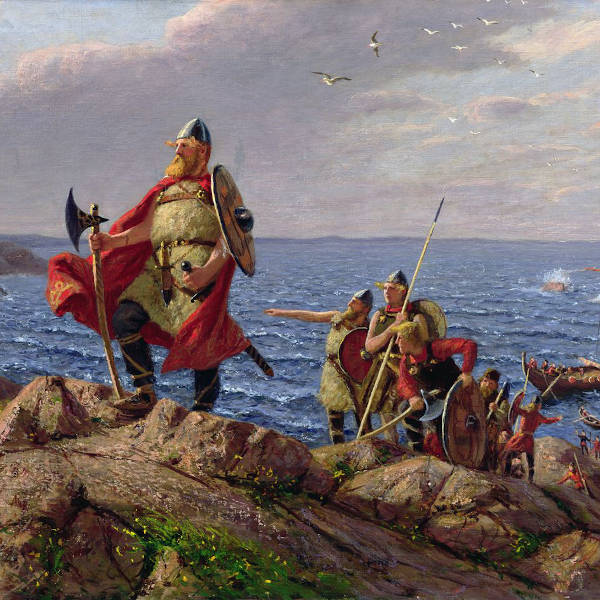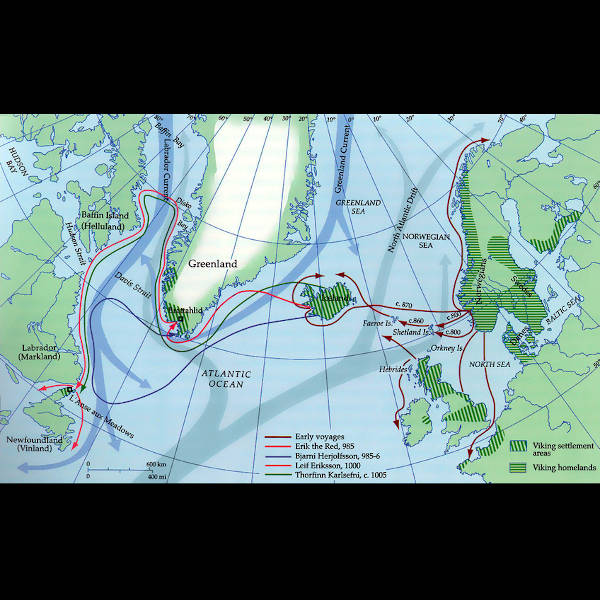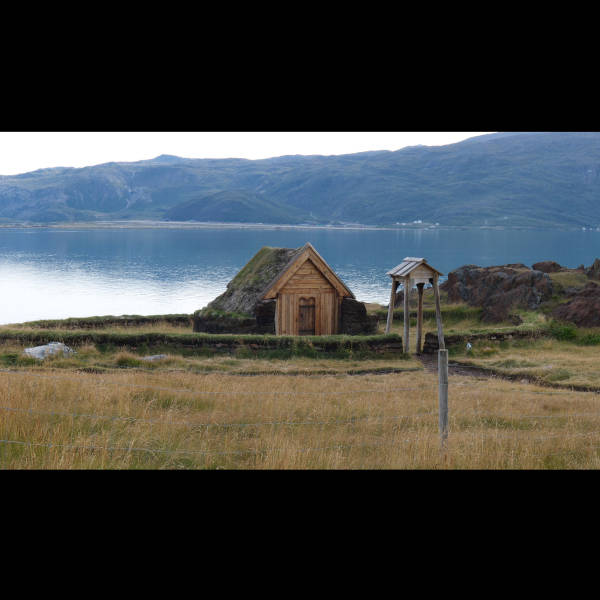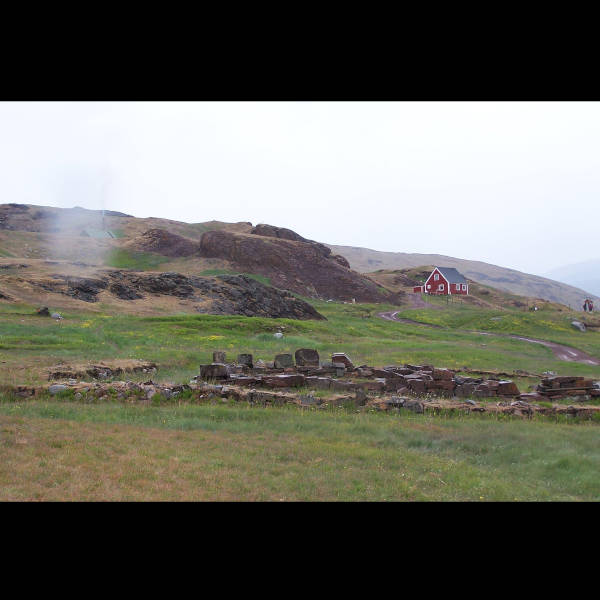DNA spotlight
Brattahlið / Erik the Red

Erik Torvaldsson, later known as Erik the Red, was born in Norway around 950 AD but emigrated to Iceland after his father Thorvald Asvaldsson was exhiled after being convicted of murder. Erik's family had settled a nice plot of land in a northern fjord. However after his thralls (personal serfs) were killed for starting a landslide on a neighbor's property, he took revenge and slew his neighbor as well as another man. Convicted for murder, Erik was banished from Iceland. Instead of returning to Norway, from where his own father was banished earlier, Erik decided to sail further west.

An old norse word Hillingar was used to refer to arctic mirages which would appear on the horizon as relatively hot air rose off of ice sheets which would reveal distant land located beyond the horizon to wayward seafarers. It is even thought that Erik had seen Greenland from such a Hillingar all the way from Iceland and other Viking navigators used this technique to find land hidden beyond the horizon. Erik discovered the western coast of Greenland and spent his 3 years of banishment exploring the island before returning to Iceland with news of his discoveries and a strong desire to return in force.

Erik sailed with 25 ships from Iceland but only 14 reached Greenland. Most of the immigrants to Greenland were themselves Icelanders as there were land shortages in Iceland. Erik's farmstead was located on some of the finest land in Greenland. Shown here is a reconstruction of a church found on his farm of Brattahlið at Eriksfjord. Note Erik himself remained a staunch pagan but his wife Thojdhild and many other Vikings had recently converted to Christianity. The ancient samples listed in this spotlight were found in graves around this church. Most were found in a mass grave and 3 had head wounds caused by a sword or axe - it is thought they were victims of combat.

The ruins of Brattahlið can be found in the town of Qassiarsuk. Note that many of the Norse buildings in Greenland were built of stone rather than wood, due to the lack of this resources. The settlements were built a bit inland to avoid the harsh sea and wind. Greenland's settlements prospered for some time to become key exporters of walrus ivory and polar bear furs to mainland Europe. Erik's son Leif Eriksson would take in his father's footsteps as an explorer and become the first known European to set foot on continental North America 500 years before Christopher Columbus.
Sample: Viking Settler Brattahlid Farm Greenland
- Sample ID: VK179
- Year: 990 AD
- Sex: Male
- Location: 61.18,-45.68
Sample: Viking Settler Brattahlid Farm Greenland
- Sample ID: VK180
- Year: 990 AD
- Sex: Male
- Location: 61.18,-45.68
Sample: Viking Settler Brattahlid Farm Greenland
- Sample ID: VK182
- Year: 990 AD
- Sex: Male
- Location: 61.18,-45.68
Sample: Viking Settler Brattahlid Farm Greenland
- Sample ID: VK183
- Year: 990 AD
- Sex: Male
- Location: 61.18,-45.68
Sample: Viking Settler Brattahlid Farm Greenland
- Sample ID: VK184
- Year: 990 AD
- Sex: Male
- Location: 61.18,-45.68
Sample: Viking Settler Brattahlid Farm Greenland
- Sample ID: VK185
- Year: 990 AD
- Sex: Male
- Location: 61.18,-45.68
Sample: Viking Settler Brattahlid Farm Greenland
- Sample ID: VK193
- Year: 990 AD
- Sex: Female
- Location: 61.18,-45.68
Sample: Viking Settler Brattahlid Farm Greenland
- Sample ID: VK513
- Year: 990 AD
- Sex: Male
- Location: 61.18,-45.68
